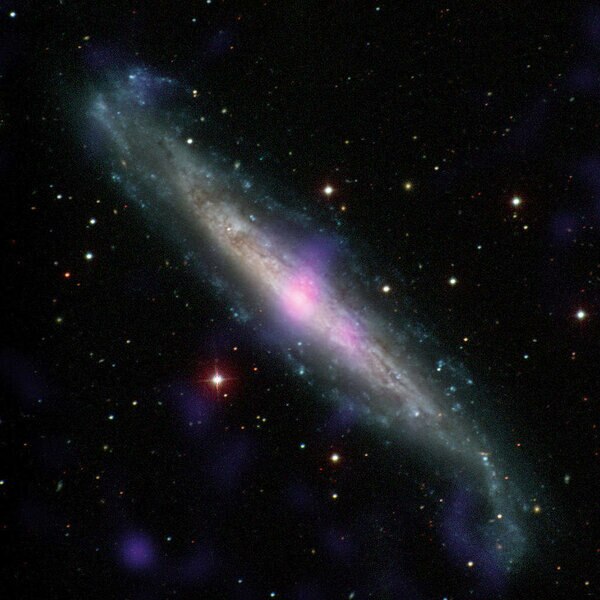Create a free profile to get unlimited access to exclusive videos, sweepstakes, and more!
Forget rogue planets - rogue black holes are wandering out there

Somehow, the sci-fi image of black holes almost always seems to imply that they lurk motionless in the cosmic darkness, waiting for their next victim to venture too close.
There are black holes that never move — but also those that stealthily creep across their galaxies. A supermassive black hole that feeds on a seemingly endless supply of gas and dust is believed to exist in every active galactic nucleus (AGN). What is not immediately obvious is how many black holes it took for the beast to grow that enormous. Galaxy mergers in the early universe smashed black holes together, but not all of them came out in one piece.
Wandering black holes are a thing. Astronomer Angelo Ricarte of the Harvard & Smithsonian Center for Astrophysics, who led a study recently published in Monthly Notices of the Royal Astronomical Society, used simulations to find that some of them were too stubborn to merge with the supermassive black hole in their AGN, so they went rogue.
“You can tell a black hole is a wanderer by measuring how far it is from the center of its host galaxy,” Ricarte told SYFY WIRE. “Usually, the supermassive black holes we observe are located right at their galaxies' centers. Yet the wanderers in our simulations were often thousands of light years off, orbiting invisibly in the galactic outskirts.”
Ricarte and his research team used the ROMULUS code to find out how black holes would merge and interact with other objects, including other black holes, as the universe evolved from the time of the Big Bang. ROMULUS uses what is known as a smooth particle hydrodynamics code that sees objects in the universe as particles. Everything from the earliest haze of gas to stars, planets, black holes and even dark matter is a different particle. They then plugged in as much astrophysical knowledge as possible and let the program evolve this digital universe.
Black holes don’t usually get much attention with other codes, especially when they are fast-forwarding through 14-billion-year simulations of the entire universe, but ROMULUS kept an extra eye on them. More of these rogues showed up in the early universe because it was basically an enormous cosmic pinball machine. Things whizzed and flew and banged into other objects all the time in what was then a tumultuous place, so it should be no surprise nascent galaxies were running into each other and merging much more than they do now.
“Galaxy mergers happened more frequently, and they brought with them what were previously central supermassive black holes that often ended up as wanderers in the new post-merger galaxy,” Ricarte said.
Most black hole mass in the early universe is thought to have belonged to black holes that didn’t make it through a successful merger and went off on their own. Even today, at least according to ROMULUS, about 10% of black hole mass out there belongs to wandering black holes. That doesn’t necessarily mean they are doomed. While some endlessly wander on the edge of their galaxy, snapping up unfortunate stars that cross their paths, other, more massive rogues may someday merge with the supermassive black hole in the AGN. The reason? Gravity.
Black holes that have more mass will experience more drag as they meander through space with all its objects and dark matter, especially if they are still near the center of their galaxies, which can get extremely dense. This drag is known as dynamical friction. The black hole also has more gravity and will keep picking up stars and dark matter as it travels, giving them an energy and momentum boost, but slowing itself down. They end up dragging it backwards, sometimes right back to the AGN where it may merge with the existing supermassive black hole.
Ricarte is excited to see what else wandering black holes could reveal. They could give away more about the gravitational waves (released from mergers) that an observatory on the moon could someway observe, and even tell us about themselves.
“The results from these simulations offer clues to help us find these wanderers observationally,” he said. “I'm particularly excited about the prospects of detecting wanderers through the flares that occur when a black hole rips apart and eats a star.”



























